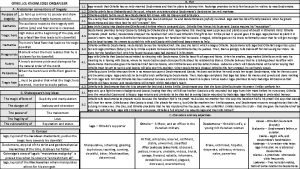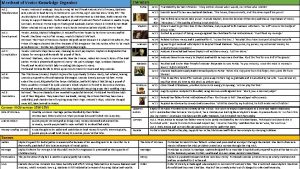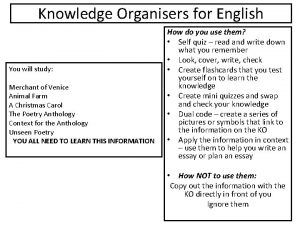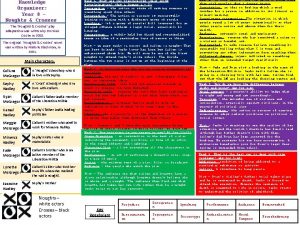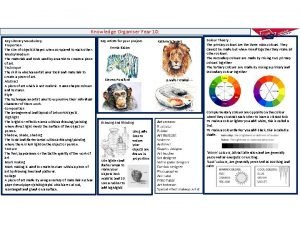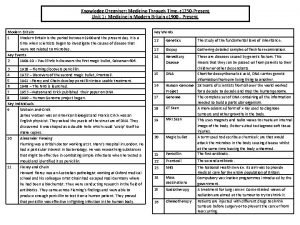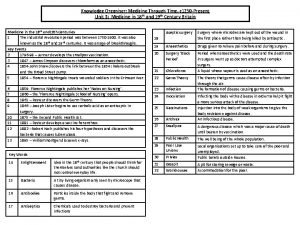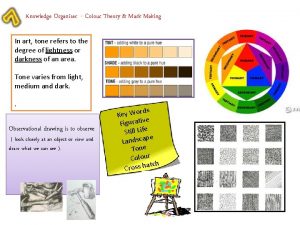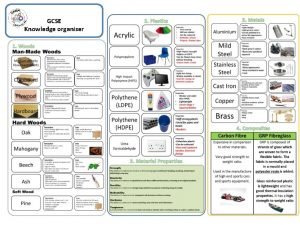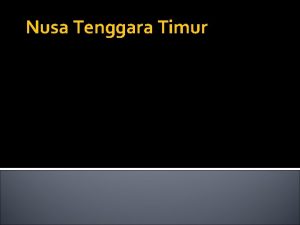GCSE Knowledge Organiser Unit 1 Waves TWO NUSA









- Slides: 9

GCSE Knowledge Organiser Unit 1 – Waves TWO NUSA SCIENCE ONE Transverse Wave Longitudinal Wave The oscillations (vibrations) are perpendicular (at 90°) to the direction of energy transfer The oscillations (vibrations) are parallel to the direction of energy transfer. Most waves are transverse, including all electromagnetic (EM) waves e. g. light, ripples and waves in water and waves on a string An example is sound waves in air THREE Speed of sound in air = 330 m/s Keyword Definition Amplitude The maximum displacement of a point on the wave from its undisturbed position Wavelength The distance between the same point on two adjacent waves Frequency The number of complete waves passing a certain point per second. It is measured in Hertz (Hz) Wave speed The speed at which the energy is transferred (or the wave moves) through the medium FOUR When a wave meets a boundary between two materials, three things can happen: Absorption The wave transfers energy to the material’s energy stores (often thermal energy store = heating) Transmission The wave carries on travelling through the new material. This leads to refraction. Reflection The incoming ray is neither absorbed or transmitted, it is ‘sent back’ away from the second material • • Electromagnetic (EM) waves are transverse waves They transfer energy from a source to an absorber All EM waves travel at the same speed through air or a vacuum (space) They are vibrations of electric and magnetic fields (not particles) EM waves travel at different speeds in different materials (which can lead to refraction) We group EM waves based on their frequency and wavelength (see the spectrum above) Our eyes can only detect a small section of the EM waves – visible light EM waves are generated by different changes in the atoms of their nuclei

GCSE Knowledge Organiser Unit 1 – Waves FIVE Refraction • When a wave crosses a boundary of a different material, it changes speed • If the wave is travelling along the normal it will change speed but is not refracted • If the wave hits the boundary at an angle it changes direction, it is refracted • As the wave travels into the second material, it slows down and bends towards the normal • As the wave leaves the material, it speeds up and bends away from the normal • The higher the density of material, the more the wave is refracted (the more the wave slows down) • The wavelength of the wave changes when it is refracted, but the frequency stays the same NUSA SCIENCE SIX Reflection SEVEN EM Wave Uses Dangers Radio waves Television, radio telescopes Isn’t absorbed by the soft tissue – passes through without damage EIGHT Required Practicals Microwaves Satellite communications, cooking food Infrared Electric heaters, cooking food, infrared cameras Visible light Fibre optic communications Ultraviolet Fluorescent lamps, sun tanning Damage surface cells (sunburn, premature ageing of skin), blindness and increased risk of skin cancer X-rays Medical imaging and treatments Ionising radiation – causes gene mutation or cell destruction, and cancer Gamma rays Sterilising surgical instruments, treatment of cancer Ionising radiation – causes gene mutation or cell destruction, and cancer Ripple tank – waves in a liquid (calculate the speed of waves) Leslie Cube – Infrared absorption A Leslie cube is a hollow, watertight, metal cube made of e. g. aluminium, whose four vertical faces have different surfaces (e. g. matt black, shiny metal) – to investigate IR emission Waves on a string (solid) (calculate the speed of waves)

Knowledge Organise Quiz Boxes 1 & 2 1. What is the definition of ‘Frequency’? 2. What does ‘oscillation’ mean? 3. In which type of wave are the oscillations perpendicular to the direction of energy transfer? 4. What is being described? - ‘The maximum displacement of a point on the wave from its undisturbed position’ 5. What type of wave is a sound wave? 6. What type of wave is light? 7. What is the definition of ‘Wavelength’? 8. What is the definition of ‘Wave Speed’? 9. In which type of wave are the oscillations parallel to the direction of energy transfer? 10. Name 2 different parts of a wave.

Knowledge Organiser Quiz Boxes 1 & 2 - Answers 1. What is the definition of ‘Frequency’? • The number of waves passing a certain point each second 2. What does ‘oscillation’ mean? • The vibrations that create a wave 3. In which type of wave are the oscillations perpendicular to the direction of energy transfer? • Transverse 4. What is being described? - ‘The maximum displacement of a point on the wave from its undisturbed position’ • Amplitude 5. What type of wave is a sound wave? • Longitudinal

Knowledge Organiser Quiz Boxes 1 & 2 - Answers 6. What type of wave is light? • Transverse 7. What is the definition of ‘Wavelength’? • The distance between the same point on two adjacent waves 8. What is the definition of ‘Wave Speed’ • The speed at which the energy (or the wave moves) through the medium 9. In which type of wave are the oscillations parallel to the direction of energy transfer? • Longitudinal 10. Name 2 different parts of a wave. • Peak, Trough, Rarefaction, Compression

Knowledge Organiser Quiz Box 3 1. The speed of sound in air is? 2. How would you calculate the Period of a wave? 3. What does absorption mean? 4. The unit for wave speed is? 5. Frequency is measured in? 6. What does transmission of a wave mean? 7. What is the equation to calculate wave speed? 8. The unit for a Period of a wave is? 9. What happens to a wave that experiences reflection? 10. The unit for wavelength is?

Knowledge Organiser Quiz Box 3 1. The speed of sound in air is? 330 m/s 2. How would you calculate the Period of a wave? 1 ÷ frequency 3. What does absorption mean? The wave transfers energy to the material’s energy stores 4. The unit for wave speed is? Metres per second (m/s) 5. Frequency is measured in? Hertz (Hz) 6. What does transmission of a wave mean? The wave carries on travelling through the new material 7. What is the equation to calculate wave speed? Frequency x wavelength or f x λ 8. The unit for a Period of a wave is? Seconds (s) 9. What happens to a wave that experiences reflection? The incoming ray is ‘sent back’ away from the second material 10. The unit for wavelength is? metres (m)

Knowledge Organiser Quiz Box 4 1. 2. 3. 4. 5. EM waves transfer energy from …. . to …… What type of waves of EM waves? How are EM waves grouped? How are EM waves generated? Which section of the EM spectrum can be detected by our eyes? 6. What is the wavelength of Gamma rays? 7. Which EM wave has the longest wavelength? 8. Which EM wave has the highest frequency? 9. What is the wavelength of Ultraviolet rays? 10. All EM waves travel at the same speed through…

Knowledge Organiser Quiz Box 4 1. EM waves transfer energy from a source to an absorber 2. What type of waves of EM waves? Transverse 3. How are EM waves grouped? By wavelength and frequency 4. How are EM waves generated? Changes in atoms of their nuclei 5. Which section of the EM spectrum can be detected by our eyes? Visible light 6. What is the wavelength of Gamma rays? 10 -15 m 7. Which EM wave has the longest wavelength? Radio waves 8. Which EM wave has the highest frequency? Gamma rays 9. What is the wavelength of Ultraviolet rays? 10 -8 m 10. All EM waves travel at the same speed through air or a vacuum
 Knowledge organiser romeo and juliet
Knowledge organiser romeo and juliet Othello knowledge organiser
Othello knowledge organiser Merchant of venice knowledge organiser
Merchant of venice knowledge organiser Merchant of venice knowledge organiser
Merchant of venice knowledge organiser Noughts and crosses knowledge organiser
Noughts and crosses knowledge organiser Art knowledge organiser
Art knowledge organiser Art knowledge organiser
Art knowledge organiser Medicine through time knowledge organiser
Medicine through time knowledge organiser Medicine through time knowledge organiser
Medicine through time knowledge organiser Art knowledge organiser
Art knowledge organiser

